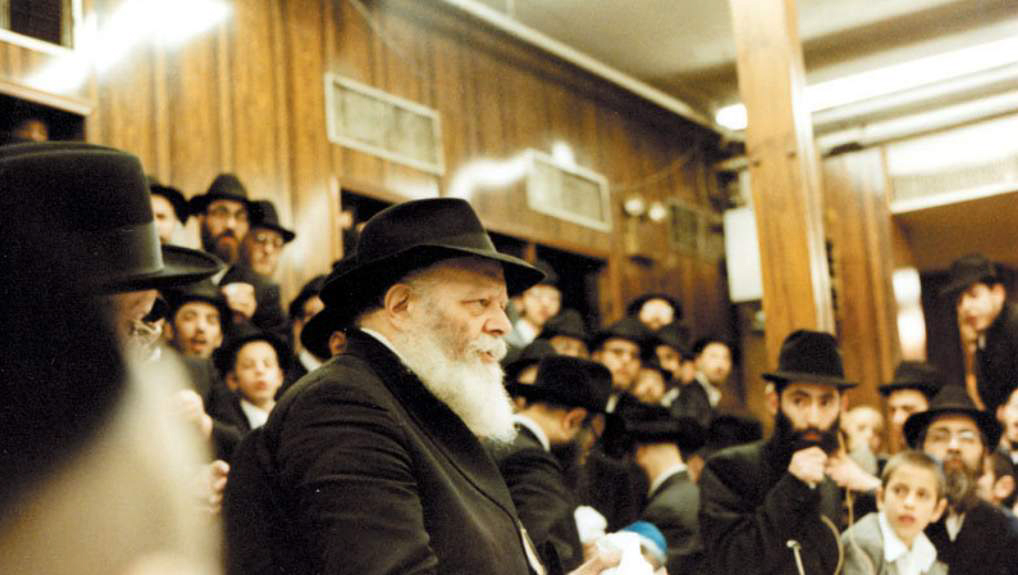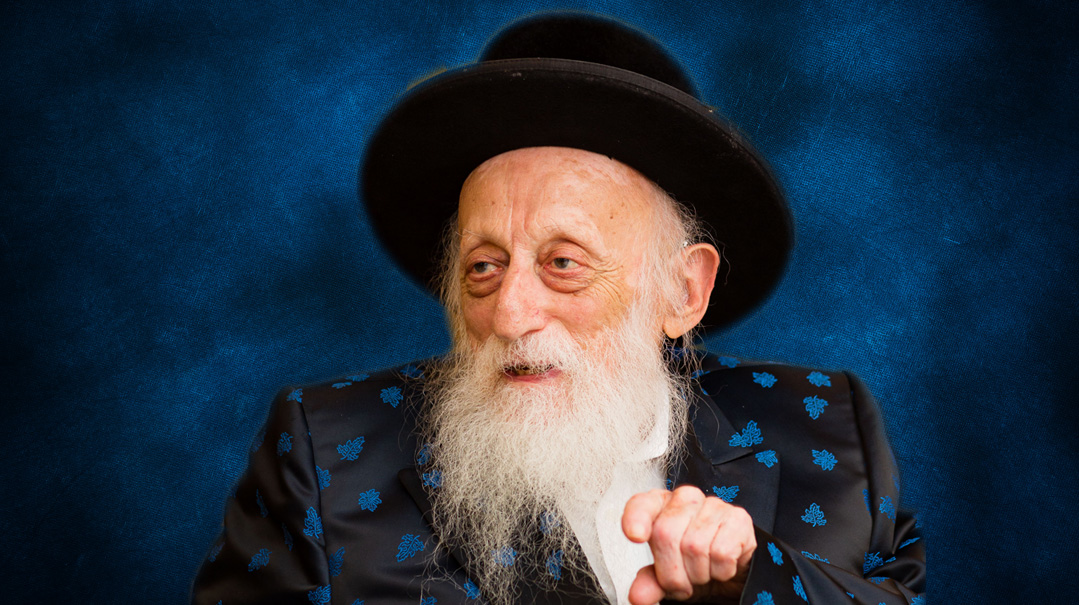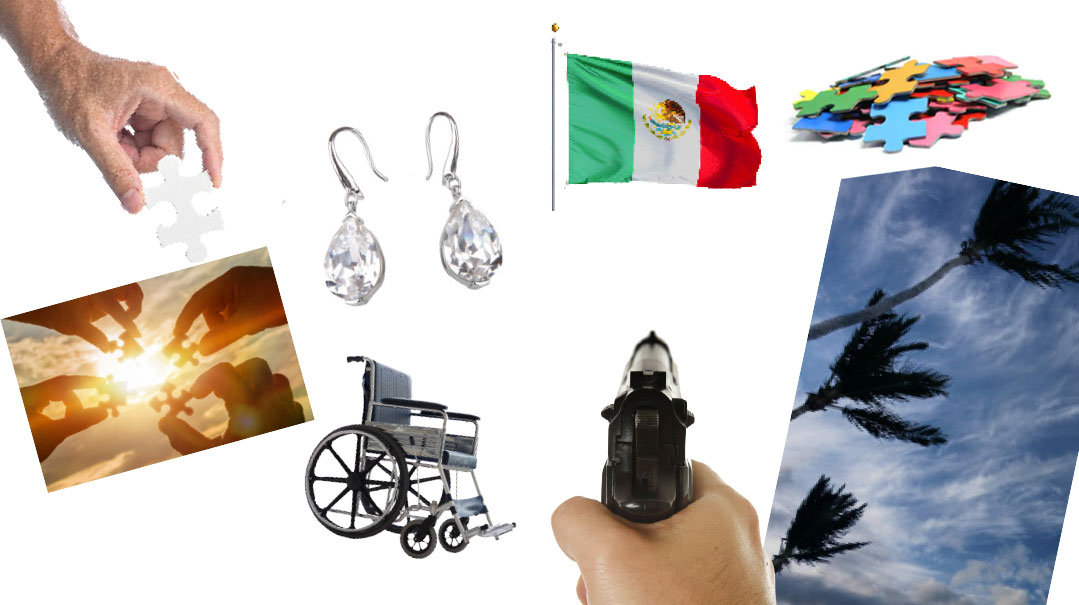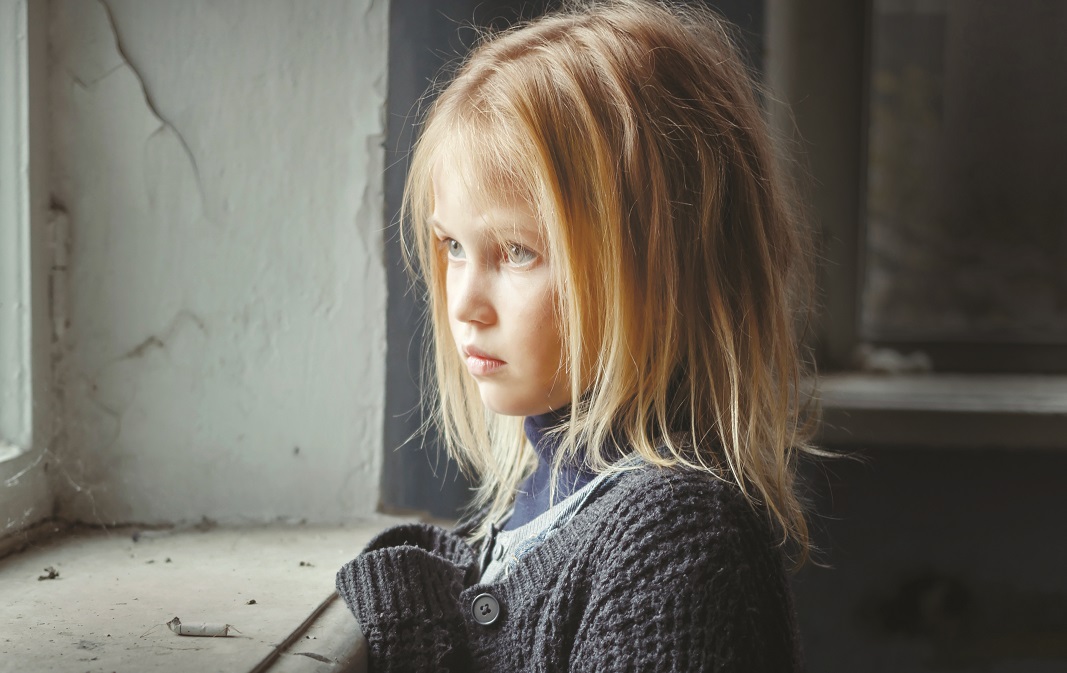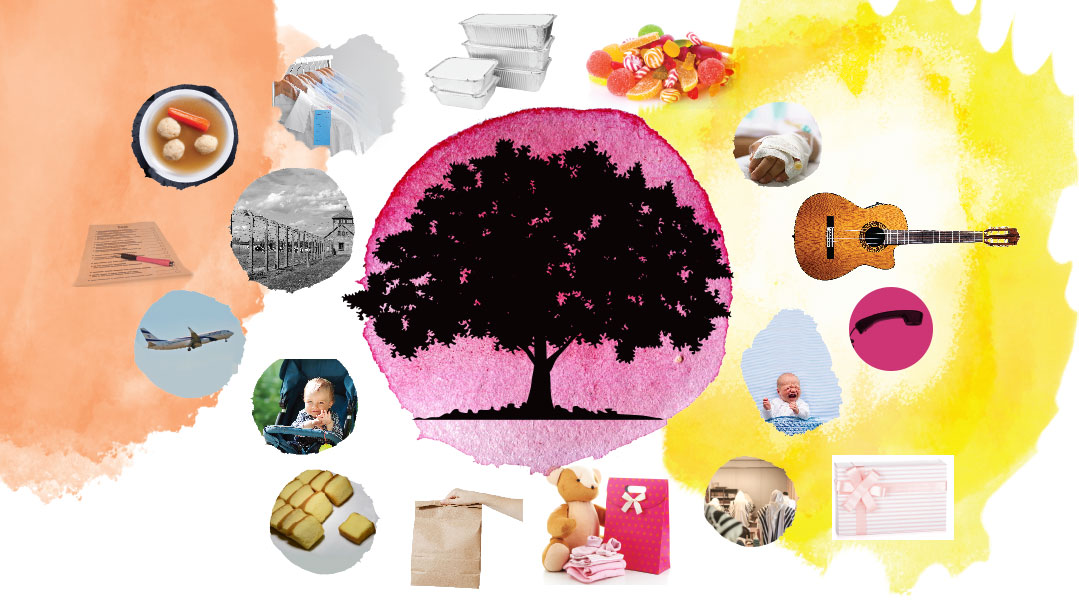Whole Broken Vessels

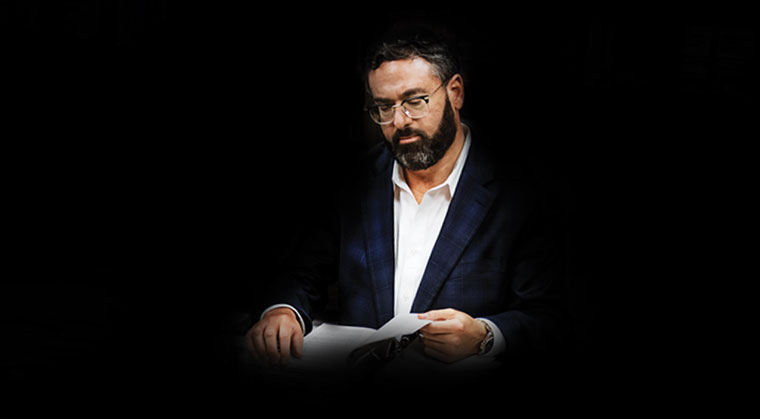
“Suddenly you’re breathing a different oxygen than everyone else. I used to flip past the Chai Lifeline ads in magazines with pictures of sick kids — I never imagined it could concern me!” (Photos: Yossi Percia)
B
aruch C. Cohen is a tall man with a commanding presence, the sonorous voice of a stage actor, and a trial lawyer’s way with words. His law office, on the ninth floor of a swanky professional building on Wilshire Drive, affords a sweeping view of Los Angeles, with downtown at one end and the Pacific Coast at the other. The walls are adorned with framed degrees, awards, and news articles in which he’s been featured.
Everything in this immaculate, gleaming office speaks to prestige and success, and Cohen presents as an alpha-male lawyer, an intense and forceful advocate who knows what he wants to achieve and will go after it tenaciously. He has been described by others as a “pit bull” in courtroom battles, and is equally aggressive about defending Israel’s right to exist, authoring a blog entitled American Trial Lawyers in Defense of Israel.
Yet despite his powerful personality, Cohen was brought to his knees some 14 years ago when tragedy struck his family. His oldest child, Hindy, was diagnosed with cancer, and passed away at age 17 after two and a half grueling years of struggle.
Baruch Cohen loved his daughter with a fierce intensity, and he mourned her equally intensely — to the point where he thought he might never recover. But grieving is a process, and over the past 14 years he learned a lot about healing — what helped him, what brought him down, what his triggers were. A former avreich, he sought comfort and validation in Torah sources, and found much that spoke to him. The result is a new book, Grieving and Healing, a collection of divrei Torah and his own insights that are his offering to anyone who’s suffered a loss.
Nothing Prepares You
Born into a Modern Orthodox family in Far Rockaway, Cohen wasn’t sheltered from rough living or family tragedy. His father, Rabbi Dr. Samuel Cohen, headed the Jewish National Fund, but passed away at the relatively young age of 66.
“My parents were old-school religious Zionists,” he relates.
His mother, a Holocaust survivor descended from the Hager family of Vizhnitz, would later remarry Rabbi Berel Wein (she was nifteres this past January). “Rabbi Baruch Chait’s father was the rav of our shul,”he adds.
Baruch was sent to Camp Torah Vodaath, where he became inspired by learning. He spent six years there before marrying his wife Adina (n?e Mandelbaum, a descendant of the family who built the house that became the Mandelbaum Gate). After marrying, he enrolled in kollel at Yeshivas Chofetz Chaim while earning a degree at Queens College at night.
“I always had a bug for the law,” he says. “In beis medrash we were only allowed to read the Wall Street Journal, but I’d read the New York Times at college, and sometimes go to the courthouses in Lower Manhattan to observe.”
He went for his law degree at Southwestern Law School in Los Angeles, which he describes as similar to NYU. He clerked for judges, worked for a Wall Street firm, and eventually segued from bankruptcy cases to business and civil law and trial litigation.
“I learned to fine-tune my speaking skills, learned how to address a jury,” he recounts. “I am aggressive, but not abrasive. I aim to be confident without being arrogant.”
By 2001, he seemed to have achieved the perfect upwardly mobile life. He had moved into his current office, bought himself a house in Hancock Park, and had four beautiful children. Just one day before 9/11, however, his family found themselves reeling from their own personal catastrophe: Hindy was diagnosed with Ewing’s sarcoma, a rare and aggressive pediatric cancer. At the time, Hindy was a student in Bais Yaakov of Los Angeles. Photos depict a sweet-faced teenager with dark hair and her father’s blue eyes.
“She was a normal, terrific frum kid,” her father says. “She loved school, she loved her family. She had many friends who visited all the time. During the times she was out of the hospital, they’d constantly go out for coffee, go shopping at the mall. She didn’t want to draw attention to herself or be a ‘chesed project.’ ”
Having a child with cancer rudely catapulted the family into a brand-new terrifying mental space.
“It was Gehinnom, a terrible nisayon,” Cohen says. “Suddenly you’re breathing a different oxygen than everyone else. I used to flip past the Chai Lifeline ads in magazines with pictures of sick kids — I never imagined it could concern me! I used to go to Disneyland, and just see balloons and cartoon characters. But once I went there with a child in a wheelchair, I only saw the sick kids.”
Cohen’s wife Adina would stay at the hospital during the week with Hindy, while Cohen would visit after work and spend Shabbos with her. They’d sing zemiros together on Friday nights, and make Shabbos parties on Saturday afternoons with Chai Lifeline nosh, often sharing with the hospital staff and friends who walked over to see her. Hindy loved hearing stories about her father’s trial victories and setbacks, and having her father read her news and columns from Jewish newspapers. Both enjoyed the lively DMCs those articles would provoke.
“During the week, I would save hysterical jokes to share with Hindy on Shabbos,” Cohen says. “She loved a good laugh, and would try to guess the punch lines. Sometimes we’d watch old ‘I Love Lucy’ clips, and she’d giggle early into the episode as she anticipated the comic situation about to unfold.”
Rabbi Hershy Ten from Bikur Cholim walked many miles to visit them every single Shabbos, and Hindy always enjoyed his funny, entertaining company. “Her eyes would light up when he came,” Cohen says. “He was the perfect blend of optimism and realism.”
Cohen says he himself got through their ordeal by assembling a “dream team” for himself, a Rolodex of top rabbanim and advisors. No one rav could be all-purpose in their situation; they needed one rav who was good at empathy, another who could give medical guidance, yet another to pasken on other issues.
“My ‘team’ was a lifeline,” he says.
He kept up his law practice even while Hindy was sick, having seen other families who gave up jobs and went into bankruptcy in similar situations, and/or suffered serious shalom bayis problems.
“It kept me sane,” he admits.
But he and his wife barely saw each other during the months Hindy was sick. With three other children at home, they took shifts in the hospital, and were obliged to accept help from Chai Lifeline and Bikur Cholim. He tried not to let his brain go into fast-forward mode, knowing that fear is an adversary that could cripple him at a time his family could ill afford for him to collapse.
Dashed Hopes
Fifteen years ago, he says, people were still whispering “yenneh machlah” rather than calling cancer by its name. A well-intentioned person suggested that to help his daughter’s refuah, he should do a chesbon hanefesh, to uproot any aveirahs or character flaws he had.
“That hurt me,” he says. “It’s not a healthy suggestion, either psychologically or religiously, for someone emotionally compromised by trauma.”
He wasn’t the type to start running around to rabbis and rebbes for brachos.
“I’m Litvish. I’m not into kabbalah,” he says. But he did join parent support groups from Chai Lifeline, and found them helpful.
Hindy herself was never a complainer, and held on to her emunah peshutah throughout her ordeal, always conscientious to express deep hakaras hatov to the nurses and doctors.
“She got that solid emunah from my wife,” Cohen declares.
At first, it looked like their positive outlook was justified: Hindy went into remission after the first course of treatment at Children’s Hospital, lasting about nine months.
“It is hard to describe the simchah in our home and at school when Hindy returned at the very end of tenth grade after her first bout with cancer,” Cohen would later write. “Teachers and classmates [were] running up to her, hugging her and kissing her.”
But Ewing’s sarcoma often comes back, even after a decade. In Hindy’s case, it returned just a year later, and Hindy missed out on the end of 11th grade and the first half of her senior year. Then a CT scan in January showed her to be cancer-free, and she was able to go back to school in February to the rejoicing of her family and friends.
“It was as if Adar had come early,” Cohen recalls.
But their joy was premature. In mid-February, doctors determined that the tumor had returned, and informed Baruch and Adina that the situation was critical — and terminal. Hindy herself knew the tumor was back, although she didn’t know just how critical things were. She was having trouble breathing, but managed to attend her brother Yehuda’s bar mitzvah. She had had her heart set on going to the Bais Yaakov Shabbaton in Malibu, and with heavy hearts her parents selflessly let her attend, despite their own longing to spend every last moment with her.
The Cohens had prayed that Hindy’s end not be painful or prolonged, and Hashem listened: He sent her a misas neshikah. The following week, on Rosh Chodesh Adar, January 23, Hindy’s neshamah left This World. Her parents had hoped one day to accompany her to the chuppah in a white gown; now they accompanied her to Olam HaEmes, in white shrouds.
Valley of the Shadow
Shivah is always painful, but Cohen found that many well-intentioned but thoughtless people inadvertently twisted the knife in the wound. Himself overwrought and hypersensitive, bromides like “Ein milim, there are no words” grated on him. He didn’t want to hear, “Hashem only sends these sorts of tests to people who can handle them” (who said he was handling?), or, “You must be very special if Hashem chose you for this nisayon” (please, Hashem, make me less special!). People would shake their heads and cluck, “Life will never be the same,” condemning him to a lifetime of depression.
Nor was it helpful to hear hagiographic accounts of gedolim who lost cherished family members over Shabbos, but didn’t let a single tear fall until after Havdalah.
“Baruch’s persona as a lawyer is aggressive, but it’s only a persona,” comments Rabbi Shlomo Einhorn, the rav of his shul. “One on one, he’s a very sensitive person.”
“How was I supposed to feel, reading those?” Cohen says. “Are we not supposed to have any emotions? Am I a lesser person because I’m devastated by my daughter’s death?”
He very much appreciated when Rabbi Label and Vivian Steinhardt flew in from New York to meet with his family. The Steinhardts had tragically lost their son Dovi, and established Ezras Dov to help bereaved families. Rabbi Steinhardt was a menahel in the mesivta of Chaim Berlin, and Cohen had been Dovi’s counselor when Dovi was a camper in Mogen Avraham.
“They communicated a healthy outlook on grief,” he says. “You can’t defer grief. Grief is there for a reason. If you try to defer it, the basketball will still be under the carpet. “
He didn’t go into denial — quite the opposite. “I fell into a black hole,” he says. “Depression was now my potential adversary.”
During the following months, he saw what helped him and what didn’t. It didn’t help when, as he broke down crying during davening, someone said to him, “You’re still with that?” On the other hand, a gentle squeeze on the shoulder by a friend as he sobbed under his tallis made him feel supported. A walk with a friend who didn’t say anything, just kept him company in a caring way, was helpful.
“That sort of validation was the key to healing,” he says. “My pain was very real. But Hashem wanted me to have it, so I know there must have been something there for me in the experience.”
He learned what events are painful triggers for him. “I still won’t go to a child’s funeral,” he says. “It’s too devastating. It takes me too long to recuperate.”
He went to events with other bereaved parents, finding them very helpful at the beginning. He saw different approaches to grief, learned from different therapists. After a while, however, those events produced “diminishing returns” for him, and the speeches became predictable.
Eventually he was able to move from “being pain” to “having pain,” as bereaved mother Sherri Mandell describes in her book The Blessing of a Broken Heart. The major turnaround, the moment the river changed course for him, was the epiphany that he had to come out of his own grief to help his family deal with their pain.
“That’s what started me on the path to healing,” he says. “I saw the toll on the others, and that pushed me to be stronger for them.”
Around that time, while in shul on a Friday night and feeling low, he started paying attention to the words of Kabbalas Shabbos. “Rav lach sheves b’eimek habacha — Too long have you dwelt in the valley of tears,” the men sang, and the words seemed to speak directly to him.
He was finally tired of being stuck in a ditch, and tired of reading books about tragedy. “I’m a lawyer. I’m used to creating trial strategies and preparing for a litigation fight,” he says. “But here I found myself in the ultimate fight, a fight with the yetzer hara.”
A fan of Sun Tzu’s classic, The Art of War, he knew the first principle: Know your enemy and know yourself. In his case, he knew his enemy to be competing, paralyzing emotions, and he needed to be strong and focused in his battle against them, like a true warrior. His new game plan was to seek counsel from the truly wise, our Torah sages.
“Baruch is a deep person and a product of his Chofetz Chaim background, in that he looks at everything through a Torah lens,” says his friend Rabbi Nechemia Langer, rav of Beis Medrash Shaare Torah in Los Angeles.
“I wanted to hear advice directly from Chazal,” Cohen says. “I started amassing a library of divrei Chazal, Tehillim, tefillah, and Torah insights on bereavement, looking for gems that would speak to me.”
He began collecting letters from great rabbanim and even secular writers about grief. For example, Rav Moshe Feinstein wrote a letter to Rav Shneur Kotler when the latter’s beloved son was niftar; even President Lincoln, who lost three children, wrote a sensitive letter about mourning to a bereaved mother who lost two sons in the Civil War.
Passages from Torah that he’d never paid attention to when things were going well now leapt off the page with question marks. Why don’t we hear about Yaakov crying for Rochel, although we are told Yaakov cried at other times, and we are told Avraham cried for Sarah? How did Aharon HaKohein’s wife react when her sons were consumed by fire? Why did Yaakov allow Yehudah to bring Binyamin to Yosef in Mitzrayim? (Because Yaakov knew Yehudah, also a bereaved parent, would understand what was as stake.)
Ironically, shortly before Hindy was diagnosed, Cohen developed a strange yen to learn the Shaar Habitachon section of the Chovos Halevavos. “I’d always avoided it when I was in Chofetz Chaim,” he avows. “But suddenly I felt interested. It’s as if Hashem wanted to send the refuah before the makkah.”
He found many of his own reactions addressed in Torah sources. For example, after Hindy was nifteres, he found it painful to watch other parents kiss their children in shul. Then he found a Chazal in Sefer Hachassidim that says one shouldn’t kiss his children in shul, because it could hurt the feelings of someone without a child.
“I felt validated,” he says.
Cohen’s rav, Rabbi Shlomo Einhorn of Kehilat Yavneh, gives him credit for tackling the loss head on. “So many people are struggling with loss, and books like When Bad Things Happen to Good People aren’t appropriate for the frum crowd. So they’re left with three options: leave religion, ignore the questions and get busy with life, or engage in questioning HaKadosh Baruch Hu through Torah.”
The bereavement process requires time and patience, and it’s life-altering. “Life now seems so tenuous, so fleeting,” Cohen remarks. “The secular ideals of money and fame lose all importance. As it is, every day we see in the news that someone can be on top of the world one day, and a pariah the next.
“We don’t think much about it, but Elisheva, Aharon HaKohein’s wife, also fell from a great height. Before she lost her sons, she was on top of the world. Her husband was the Kohein Gadol, her sons his priests. Her brother was Nachshon ben Aminadav. The day her sons died, she had five simchahs! We should never get too comfortable with our lives being ‘perfect.’ ”
Nowadays, when he goes to shul, he doesn’t look at the rich and famous; he seeks out the people in pain. He says he’s developed a special radar for them.
Eventually, he compiled many of the divrei Torah he’d found into a collection called Reb Yochanan’s Bone, which he printed up and distributed to friends and others he felt could benefit. (Rabi Yochanan lost ten children, and when the tenth died, he made a necklace out of a bone from that child’s little finger. He would wear it when he visited mourning parents to show them that they should not feel singled out for punishment by Hashem, since he himself, the gadol hador, had been similarly afflicted.)
As the years went on, Cohen was often called upon to speak at various functions. He speaks in his shul every year at the Seudah Shlishis before Hindy’s yahrtzeit, and the crowd has steadily grown so that now there’s usually standing room only. He attends the Bais Yaakov graduation and speaks while presenting an award he and his wife established in Hindy’s memory. It goes to a girl who, like Hindy, excels in good middos.
Another time, he was able to speak to a very high-profile group of bereaved parents in the secular world, household names in music, entertainment, and politics. One woman asked him, “Why aren’t you angry at G-d?”
He replied, “When you go through any difficult test, you can always think of ways it could be worse, but find simchah instead. You can’t forget all the good things G-d does for you even when one part of life is hard.”
“She was touched by that,” he remembers. “But to ask, ‘How could Hashem do this?’ is arrogance. Who are we to judge His decisions? It takes a certain humility to accept His decisions.”
Reaching Out Yet Further
Cohen began emerging from his grief when he realized he needed to be there for his family. And the steep climb upward was further aided by his desire to help other people as well. He wanted to use the Torah insights he’d gleaned along the way to help other bereaved parents learn the right hashfakos to deal with their challenge.
“Grief is one of the most-searched terms in Amazon,” he says. “It can be a rudderless boat. I wanted to give people healthy guidelines to navigate it.”
“What makes Baruch tick is his ability to inspire others,” says longtime Chofetz Chaim friend Rabbi Avrohom Stuhlberger. “Some people would have suppressed their memories [of a trauma] after a few years, but he retained the fire to channel his sorrow into strength.”
Cohen would send letters or poems to parents who had lost a child. Then he compiled his various hespedim, speeches, meditations, and Torah gems into a self-published book he entitled Grief and Healing through the Prism of Torah (sold through Amazon). Also included is his correspondence with the Sanz-Klausenberger Rebbe, in which the Rebbe compassionately speaks about the soul’s desire to return to its Maker, the impossibility of understanding Hashem’s ways, and the way his father, the previous Rebbe, coped with hardship and death in Auschwitz.
Another moving piece of writing in the collection was found on an American soldier, Colonel David (Mickey) Marcus, who died during the Israeli War of Independence. Marcus describes a ship leaving port for faraway lands, as a mashal for passing to the Next World. The people on shore cry as it departs; they’ll miss their loved ones on the boat, and don’t know when they’ll be reunited again. Although the ship seems to get smaller and smaller as it sails away, of course it remains the same size it always was. After a long voyage, it reaches a far-off shore in a foreign land. There, another set of people is waiting. “It’s arrived!” they cry joyfully.
A similarly encouraging perspective on death can be garnered from the excerpt from Rav Yechiel Michel Tukachinsky’s Gesher Hachaim, concepts that were later adapted into a song by Abie Rotenberg entitled “Conversation in the Womb.” Rav Tukachinsky describes twins in their mother’s womb, beginning their descent into this world. One twin, who’s comfortable in the womb and doesn’t believe in a world beyond it, doesn’t want to leave; he’s convinced it will be the end of him. The other, a baal emunah, tells him there’s another, amazing world beyond the womb, where they’ll walk freely and breathe and eat through their mouths.
The believer is born first, and the other twin hears shouting and crying. Now the next one is really terrified, convinced the “next world” means death! What he doesn’t understand is the shouts are happy cries of “Mazel tov.”
Cohen found inspiration from Rav Kalonymus Kalman Shapira, the Rebbe of Piaseczna and rebbe of the Warsaw Ghetto. When the ghetto was about to be liquidated, Rav Shapira buried the manuscript of his writings with the plea they be taken to Eretz Yisrael if found after the war. The manuscript was indeed found and published as Aish Kodesh.
Cohen warmed to the idea that just because we “lose” something doesn’t mean it’s lost forever. And when he read Aish Kodesh, he was inspired by the discussion of a midrash in which Moshe Rabbeinu expressed a fear to Hashem: “Will I truly cease to be remembered when I die?” Hashem’s response, in brief, was that when the Jewish People carry out mitzvos, they will remember him. Any time we perform mitzvos on behalf of a departed loved one, especially mitzvos that were dear to them, it helps keep them alive both in This World and the Next.
Similarly, all these projects in Hindy’s zechus help keep the Cohen family connected to her. “I don’t like to say I ‘lost’ a daughter,” Cohen says. “She isn’t lost. I still have four children, three here and one in Shamayim. I’ll always be her abba.”
When the Cohens’ daughter Tali Hertz gave birth to a baby girl and named her Chaya Chana Hindy, it brought whole new levels of nechamah.
“Tali and her husband Yechiel told us the name with such sensitivity,” Cohen says. “Just to hear Hindy’s name said to the baby in a normal, loving manner is very healing. To see her name perpetuated is the ultimate gift.”
He adds that Rav Michoel Ber Weissmandl lost five sons during the war, remarried in America, and had five more sons whom he named for the deceased ones. At the bris of the fifth son, he said, “Nekadeish b’shimchah b’olam,” the sons should be mekadeish Sheim Shamayim on earth like their namesakes in Shamayim.
It’s not easy to be shattered, Cohen says, but Hashem treasures broken luchos. A short chapter in his book discusses the Japanese art of kintsukoroi, in which broken pottery is repaired by bonding the shards together with lacquer mixed with gold, silver or platinum. The gleaming fault lines are evidence of an irreversible trauma that marked the object forever. But instead of trying to hide or disguise the damage, the Japanese transform the repair into art, creating a final product that is even more valuable than before.
“We always think about her [Hindy], but we continue on, with the ‘second set of Luchos’ even after our first set was broken and shattered,” Cohen writes in his book. “When we feel that our ‘set of Luchos’ are shattered, we need only to open our hearts to receive Hashem’s gift of a ‘second set of Luchos’ — the belief that joy can, and will, find a place in our lives again, with Luchos that will never be broken.”
(Originally featured in Mishpacha, Issue 719)
Oops! We could not locate your form.






